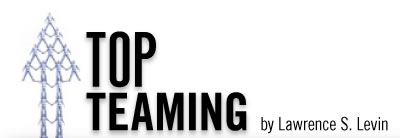Building Top Teams: One Size Does Not Fit All
Once a team has begun the process of articulating its senior purpose – what it is FOR, it then needs to define what kind of team it must be to accomplish it. There is no textbook answer. Simply put, the type of team that is needed and how members must operate together depend completely on what this team needs to do in the service of the organization’s strategic and critical priorities.
Most intact teams that are comprised of experienced people with operational and functional backgrounds express a clear need for higher interdependency as they set and begin to move toward more ambitious and higher-level goals. They know, as Marshall Goldsmith (2007) would say, “what got them here won’t get them there.” There are organizations that are specific about exactly where they must be more collaborative as a team and where they can continue to operate as they are. Portfolio companies, for example, in which business lines are separate and independent, can operate as successful and appropriate “bowling teams.” Yet even in cases of low interdependence, we find areas in which greater connectedness and collaboration, often driven from the functional areas, help these teams optimize. There are usually areas, sometimes subtle, sometimes surprising, where the team members find greater synergy and find ways to reduce costs and redundancy, and to utilize one another’s expertise to drive even better results. Simply put, there is no one “right” type of team or structure. It completely depends on what a team is tasked to do—again, what it is for.
Ask yourselves these questions and see what emerges from the dialogue:
- Given the mission and purpose of the organization (what we are for), what kind of team do we need to be to accomplish these?
- What are our critical priorities and accountabilities?
- Do we have the right people on the bus?
- How should we be structured to optimize decisions?
- Where are our critical interdependencies? How do we best reach across functions and geographies?
- How do we work together to lead the organization in these times?
- What does it mean to be a leader in this company today?
These questions are the beginning of the journey from being a good team to becoming a Top Team.
